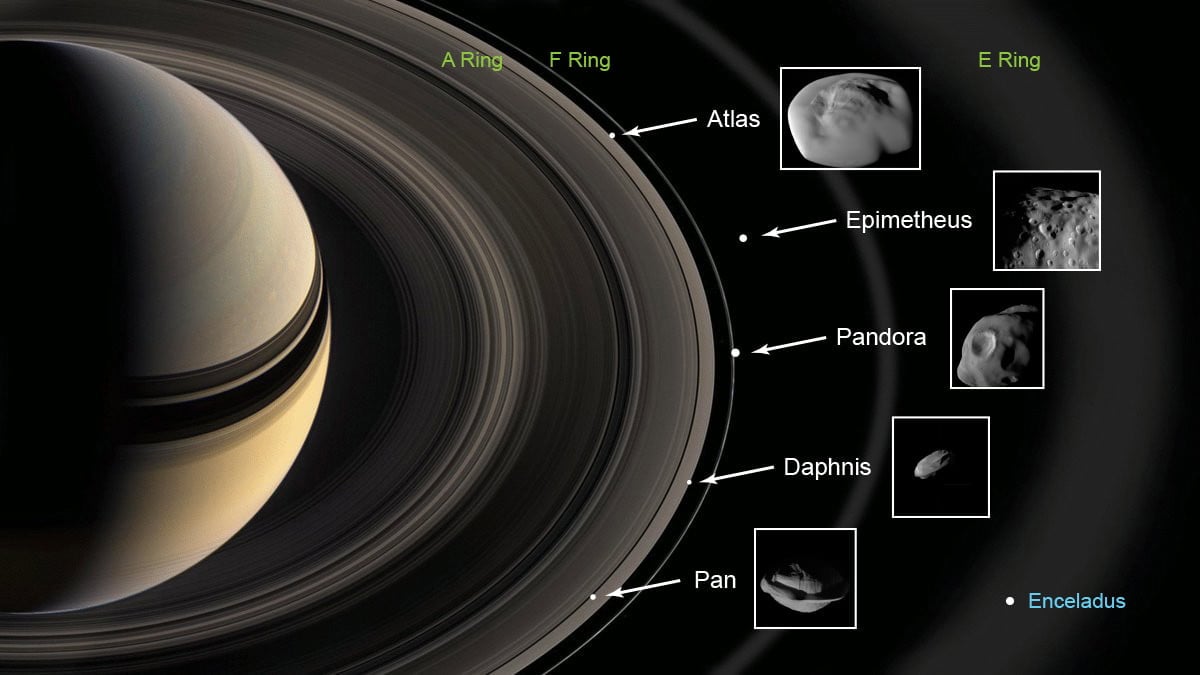
After almost twenty years in space — thirteen of which were spent making extraordinary discoveries about the Saturn system, including its rings and natural satellites — NASA's Cassini spacecraft finally ran out of fuel. However, shortly before plunging into Saturn's atmosphere on September 15, 2017, the probe completed one final important mission: six close flybys of tiny moons located inside, or near, Saturn's rings.
While all of Saturn's 62 moons are intriguing, researchers were particularly curious about six small, odd-shaped satellites that are nestled against the edge of its rings and sport different colors. Fortunately, Cassini was able to collect detailed data on five of them — Daphnis, Pan, Atlas, Epimetheus, and Pandora — allowing scientists to solve yet another mystery about our solar system's second-largest planet.
In a new study published in the journal Science on March 28, 2019, the team of 35 researchers, led by Bonnie Buratti of NASA's Jet Propulsion Laboratory in Pasadena, California, reported that the satellites are the result of the accumulation of material from the surrounding rings, which has settled around a dense core. They suspect the core is a remnant of a larger object, which broke apart, resulting in multiple smaller "moons."

The scientists arrived at this conclusion after observing that the moons' surfaces were covered with ice and dust and were highly porous. They maintain the porosity also explains the satellites' ravioli-like shapes, as the material has accumulated around their equators than at their poles.
"We found these moons are scooping up particles of ice and dust from the rings to form the little skirts around their equators," Buratti said. "A denser body would be more ball-shaped because gravity would pull the material in."
As for the different colors? The scientists suggest that Pan and Daphnis, which circle around the innermost red rings, sport a similar hue due to the deposits from the rings. The experts suspect the red material is a blend of organic compounds and iron. Though Atlas, Epimetheus, and Pandora, which are situated on the outside of the massive planet's rings, have similar deposits, they appear blueish. The researchers believe the color is caused by the bright icy particles and water vapor from Saturn's frozen larger moon, Enceladus.

"The daring, close flybys of these odd little moons let us peer into how they interact with Saturn's rings," Buratti said. "We're seeing more evidence of how extremely active and dynamic the Saturn ring and moon system is."
The researchers still have many questions, including what caused the six Saturn moons to form in the first place. The recent discovery has also led them to wonder if other planets sport similar satellites. "Do any of the moons of the ice giant planets Uranus and Neptune interact with their thinner rings to form features similar to those on Saturn's ring moons?" Buratti wonders. "These are questions to be answered by future missions."
Resources: Jpl.nasa.gov, livescience.com
